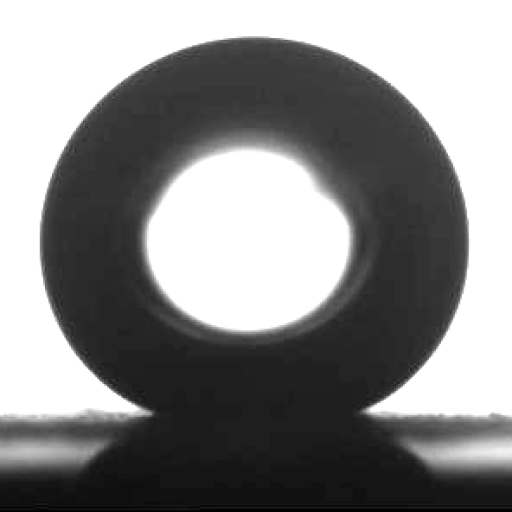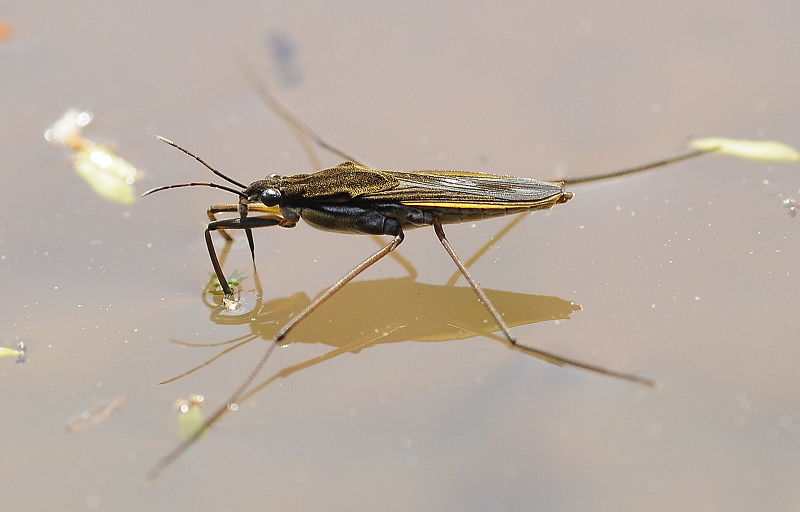
Adaptation of animals to water
How animals are influenced by water around them depends on the relative importance of surface tension and gravity. Some insects are able to rest on the surface of a pond without falling through the surface into the pond because, being very light, the gravitational force pushing them down is small compared to the surface tension holding them up. However, for the same reason, they can get stuck in the pond surface by surface tension. Mammals, being much heaver than insects, are dominated by gravity. They will penetrate the surface of a pond, but can’t rest on the surface. Generally speaking, animals less than the capillary length of water (2.73mm) will be dominated by surface tension (although it does depend on their shape as well as their size), whereas animals bigger than this will be dominated by gravity.
Although insects can’t generally penetrate the surface of a pond, some insects have evolved means of using hydrophobic surfaces to do just this. Various animals have also adapted to use hydrophobic properties to stop their fur or feathers becoming waterlogged. We will look at various examples of how some animals use hydrophobic surfaces to their advantage.
Insects that stay on the water surface: Water Strider / Pond Skater
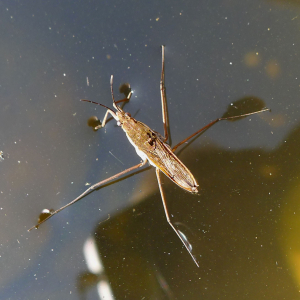
Pond skaters (also known as water striders) have superhydrophobic legs that allow them to rapidly move across the surface of ponds without getting trapped by surface tension, allowing them to eat other insects that have become trapped.
Insects that can penetrate a water surface
While most insects live above water, a few are able to break through the water surface.
Water Boatman
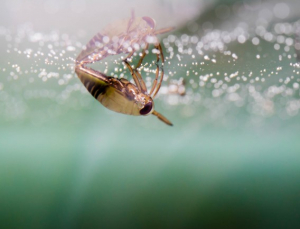
A water boatman lives at a water surface. It can pass through the surface without getting trapped using a superhydrophobic ‘coat’ that holds water away from its body.
Mosquito / Midge
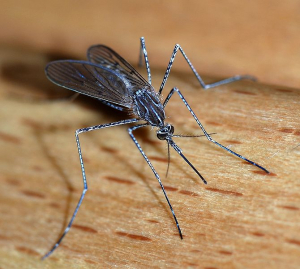
Mosquitoes and midges can break through the surface of a pond because their breathing spiracles are filled with hydrophobic hairs.
Insects that live underwater
Some insects have even evolved so that they can spend most of their time underwater.
Water Spider

A water spider breathes air underwater by carrying a bubble of air on its superhydrophobic abdomen.
Great Diving Beetle
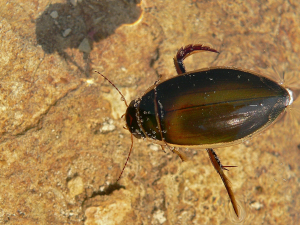
This beetle lives at the bottom of ponds, so needs to exploit diffusion of oxygen into a bubble of air it carries in order to breathe.
Insect that collects water
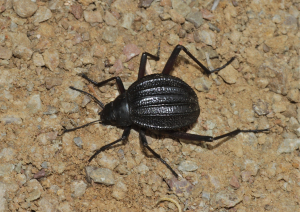
The desert beetle Stenocara sp can collect water from fog due to the structure of its back, which contains hydrophilic peaks surrounded by waxy hydrophobic areas.
Larger Animals
Larger animals, for which surface tension isn’t an issue, can still use hydrophobic effects to their advantage.
Waterfowl
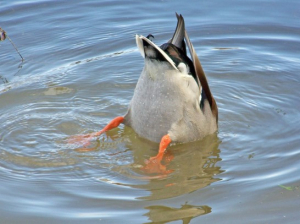
Ducks and other waterfowl float high in the water because they have layers of feathers that do not wet.
Butterfly
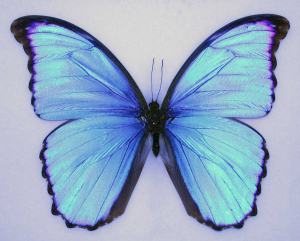
The scale structure of butterfly wings generates superhydrophobicity, which enables them to shed water in the rain so that they don’t get waterlogged.
Mammals / Marsupials
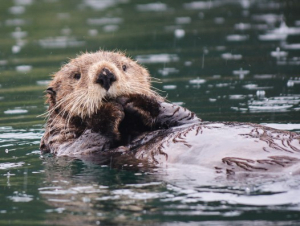
Some mammals and marsupials carry a layer of air inside their fur so that their underlayers don’t get wet straight away.
Land crab
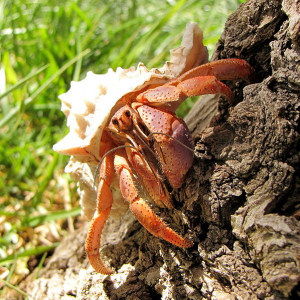
Crabs usually breathe underwater, but some have adapted to breathe on land by taking water with them. This is the reverse situation to the diving beetle and water spider.
Fire ant
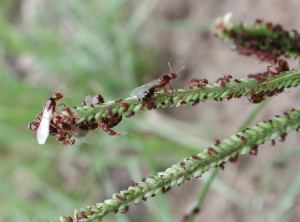
Some ants can clump together to form a superhydrophobic raft.
Gall aphids: Nature’s waste-disposal system
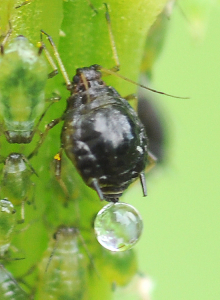
The gall aphid Pemphigus_spyrothecae secretes honeydew. Soldier aphids can remove this waste from their galls because they also excrete a powdery hydrophobic wax that coats the honeydew and encapsulates the sticky droplet of liquid. Soldier aphids can then push or roll the resulting object towards the exit of their gall. This is an example of a liquid marble.
